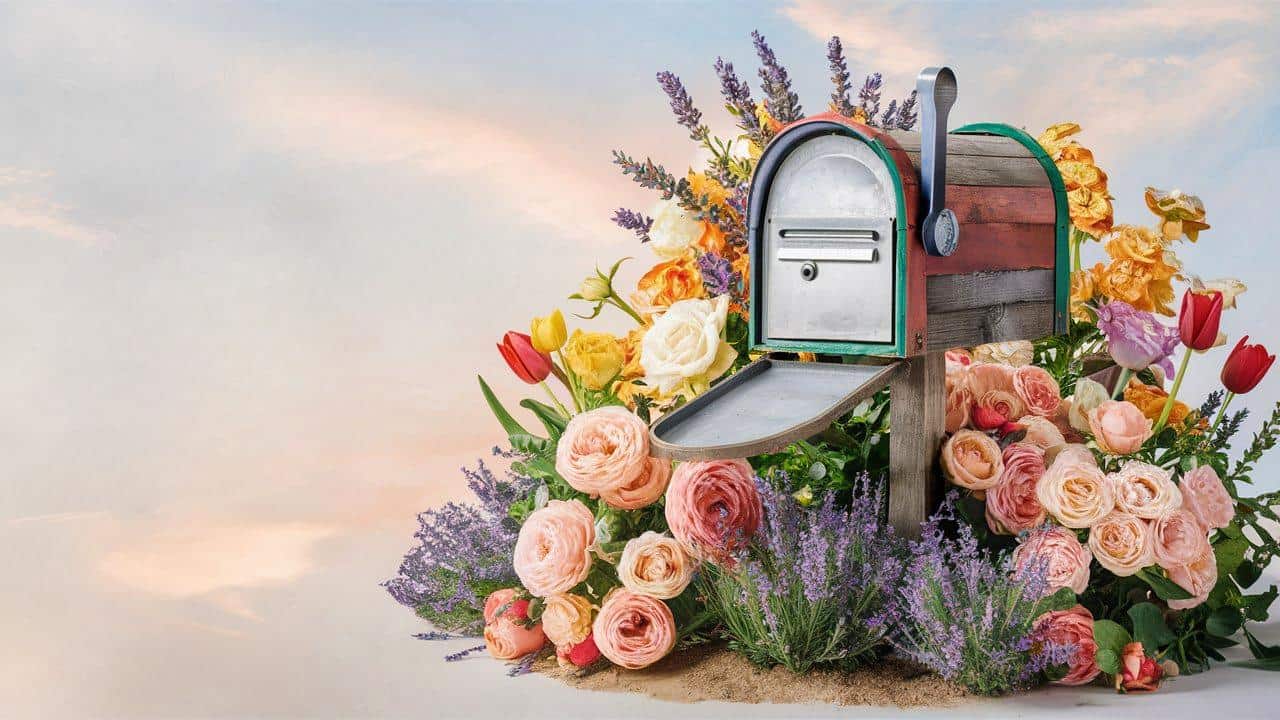As the centerpiece of your home’s curb appeal, your mailbox deserves a beautiful floral display that not only enhances its appearance but also adds a touch of charm to your entire property. In this blog post, we’ll explore four exceptional flower varieties that are perfectly suited for planting around your mailbox, each offering its own unique benefits and aesthetic appeal.
Clematis: The Graceful Climber
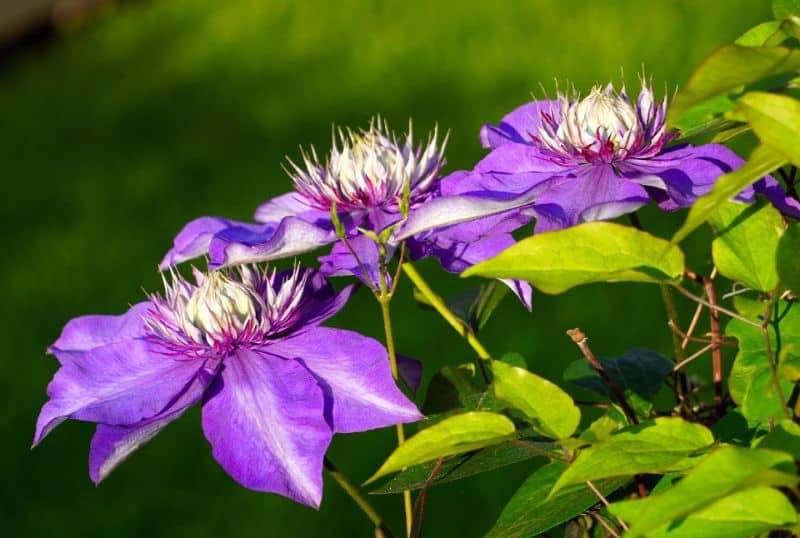
Clematis is a captivating climbing vine that can transform the area around your mailbox into a true showstopper. These vigorous plants produce an abundance of large, showy flowers in a wide range of colors, from delicate pastels to vibrant hues. Clematis thrive in well-drained soil and enjoy partial shade, making them an ideal choice for the often-shaded area around a mailbox. Their long-blooming nature ensures that your mailbox will be adorned with beautiful flowers for an extended period.
Sedum: The Resilient Succulent
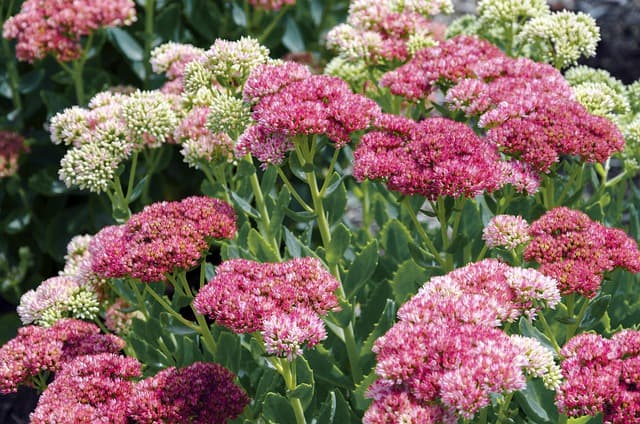
Sedum, also known as stonecrop, is a low-growing, drought-tolerant succulent that is perfectly suited for planting around your mailbox. These hardy plants require minimal maintenance and can tolerate full sun exposure, making them an excellent choice for the often-harsh conditions near a mailbox. Sedum comes in a variety of shapes, sizes, and colors, from the vibrant pink blooms of ‘Autumn Joy’ to the silvery-blue foliage of ‘Blue Spruce.’ Their compact growth habit and ability to spill over the edges of the planting area create a visually appealing and easy-to-maintain display.
Lavender: The Fragrant Delight

Lavender is a classic choice for planting around a mailbox, offering a delightful blend of beauty and fragrance. These aromatic perennials thrive in well-drained soil and full sun exposure, making them a perfect fit for the conditions surrounding a mailbox. As you approach your home, the soothing scent of lavender will greet you, creating a calming and inviting atmosphere. Lavender’s silvery-green foliage and purple flower spikes add a touch of elegance and Mediterranean flair to your mailbox display.
Zinnias: The Vibrant Annuals
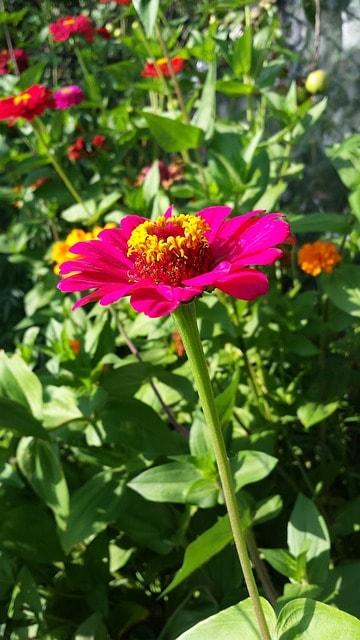
For a burst of vibrant color and a long-lasting bloom season, consider planting zinnias around your mailbox. These cheerful annuals come in a rainbow of hues, from classic reds and oranges to more unusual shades of purple and chartreuse. Zinnias thrive in full sun and well-drained soil, making them an excellent choice for the area surrounding your mailbox. Their tall, upright growth habit and large, daisy-like flowers create a stunning visual impact that will draw the eye and add a touch of whimsy to your curb appeal.
Dianthus: The Charming Pinks

Dianthus, commonly known as “pinks,” are a delightful addition to any mailbox garden. These compact, fragrant flowers come in a wide range of colors, from classic pink and red hues to more unique shades of white, purple, and even bicolor varieties. Dianthus thrive in well-drained soil and full sun, making them a perfect match for the conditions near a mailbox. Their tidy, mounded growth habit and long-blooming nature create a visually appealing and low-maintenance display that will add a touch of old-fashioned charm to your curb appeal.
Russian Sage: The Dramatic Accent

For a bold and striking accent around your mailbox, consider planting Russian sage (Perovskia atriplicifolia). This drought-tolerant perennial boasts stunning silvery-gray foliage and vibrant purple flower spikes that dance in the breeze. Russian sage requires full sun exposure and well-drained soil, making it an excellent choice for the often-harsh conditions surrounding a mailbox. Its tall, upright growth habit and dramatic visual impact will create a stunning focal point that will draw the eye and add a touch of elegance to your landscape.
Phlox: The Captivating Carpet
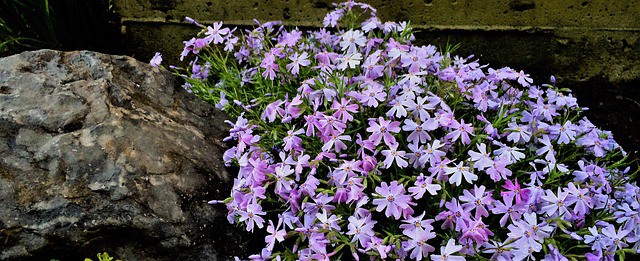
Phlox is a versatile and captivating option for planting around your mailbox. These low-growing, spreading perennials come in a variety of colors, including pink, purple, white, and red, and can create a lush, carpet-like display that spills over the edges of the planting area. Phlox thrive in well-drained soil and full sun, making them well-suited for the conditions near a mailbox. Their long-blooming nature and ability to self-seed ensure that your mailbox will be adorned with a vibrant and ever-changing floral display year after year.
Roses: The Timeless Elegance
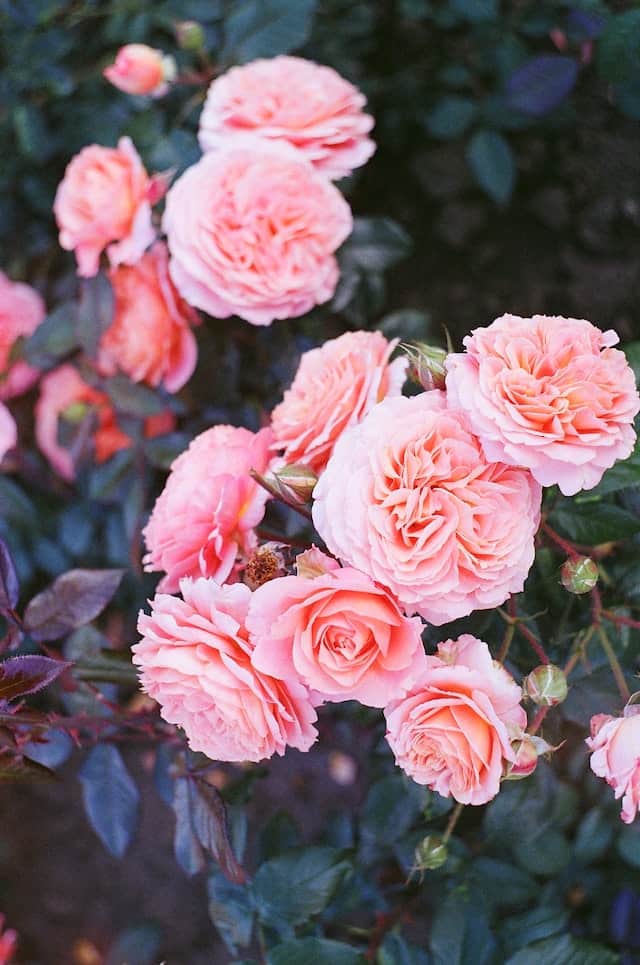
For a touch of classic elegance, consider planting roses around your mailbox. These beloved flowers come in a wide range of sizes, from compact shrub roses to towering climbers, allowing you to choose the perfect variety for your specific needs. Roses require well-drained soil and full sun exposure, making them a suitable choice for the area surrounding a mailbox. Their stunning blooms, delicate fragrance, and lush foliage will create a visually stunning and timeless display that will captivate all who pass by.
By incorporating these additional four flower varieties into your mailbox garden, you can create a truly exceptional and multifaceted display that showcases the beauty and diversity of nature. Whether you choose to plant a single type or a harmonious mix, the combination of these remarkable flowers will transform your mailbox into a true showpiece, enhancing the overall curb appeal of your home and delighting all who experience it.
Daylilies: The Resilient Perennials
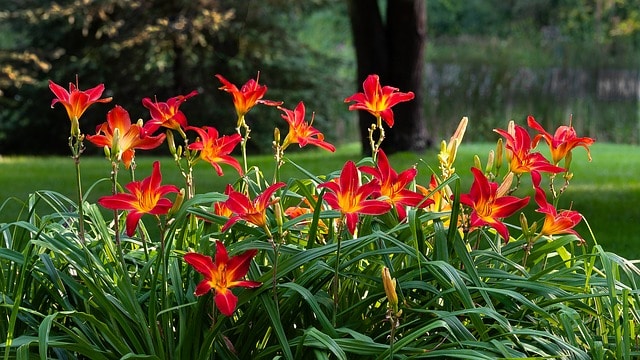
Daylilies are a fantastic choice for planting around your mailbox, as they are incredibly hardy and low-maintenance. These versatile perennials come in a wide range of colors, from bold reds and oranges to delicate pastels and bicolor varieties. Daylilies thrive in full sun and well-drained soil, making them well-suited for the often-challenging conditions near a mailbox. Their tall, slender flower stalks and large, showy blooms create a stunning visual impact that will captivate passersby. Best of all, daylilies are known for their ability to tolerate drought and poor soil, ensuring a reliable and long-lasting display.
Columbine: The Whimsical Woodland Charm
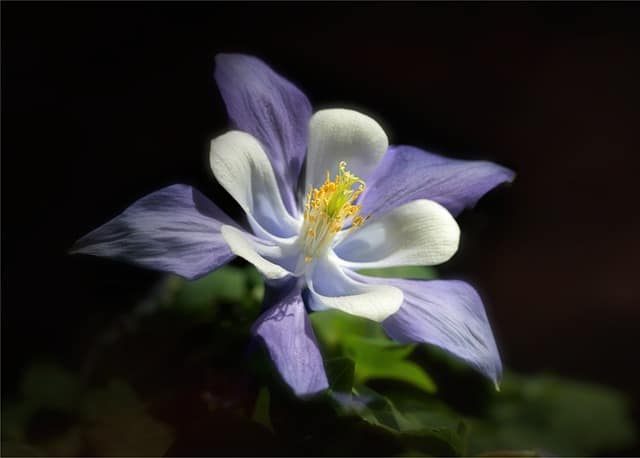
For a touch of whimsy and woodland-inspired elegance, consider planting columbine (Aquilegia) around your mailbox. These delicate, nodding flowers come in a variety of enchanting colors, including purple, pink, white, and even bicolor combinations. Columbine prefer partial shade and well-drained soil, making them an ideal choice for the often-shaded area surrounding a mailbox. Their unique, spurred flowers and lush, fern-like foliage create a captivating display that will add a sense of natural beauty and charm to your curb appeal.
Petunias: The Cascading Annuals
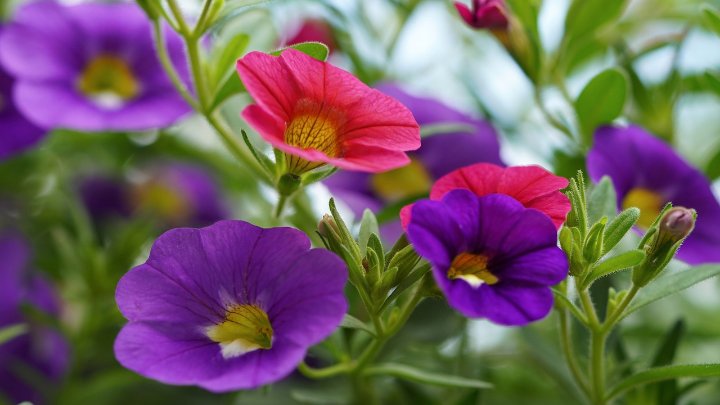
If you’re looking to add a burst of vibrant color and a cascading, spilling effect to your mailbox garden, petunias are an excellent choice. These versatile annuals come in a rainbow of hues, from classic red and purple to more modern shades of blue and black. Petunias thrive in full sun and well-drained soil, making them well-suited for the conditions near a mailbox. Their trailing growth habit allows them to spill over the edges of the planting area, creating a lush, overflowing display that will captivate all who pass by.
Mandevilla: The Tropical Climber

For a touch of the tropics, consider planting mandevilla around your mailbox. These stunning, vining plants produce large, trumpet-shaped flowers in shades of pink, red, and white, creating a bold and eye-catching display. Mandevilla require full sun exposure and well-drained soil, making them a suitable choice for the often-harsh conditions surrounding a mailbox. Their climbing nature allows them to add vertical interest and elegance to your floral display, while their long-blooming nature ensures that your mailbox will be adorned with vibrant flowers for an extended period.
Lantana: The Vibrant Annuals
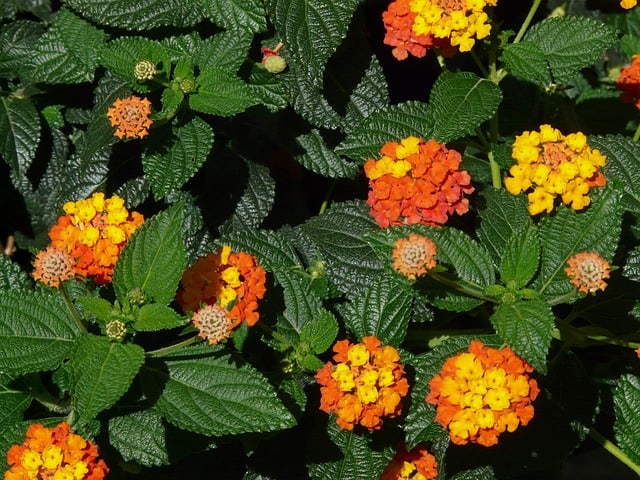
Lantana is a true showstopper when it comes to planting around a mailbox. These vibrant annuals come in a wide range of colors, from classic yellow and orange to more unique shades of pink, purple, and even multicolored varieties. Lantana thrive in full sun and well-drained soil, making them an ideal choice for the often-harsh conditions surrounding a mailbox. Their compact, mounded growth habit and long-blooming nature create a captivating display that will draw the eye and add a touch of tropical flair to your curb appeal. Lantana are also drought-tolerant, ensuring a reliable and low-maintenance floral display.
Rosemary: The Fragrant Perennial
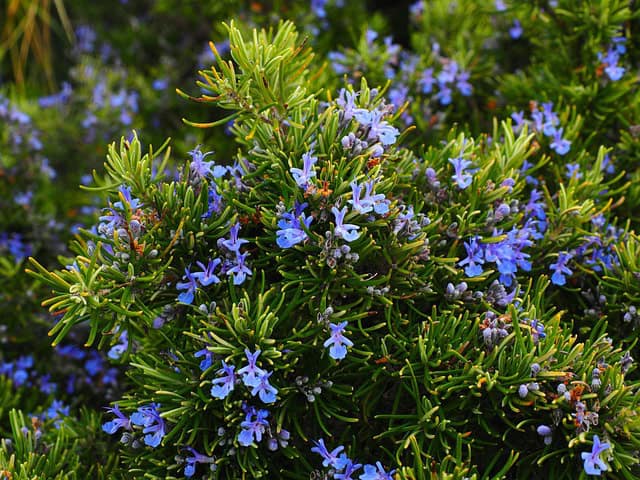
For a touch of culinary and aromatic charm, consider planting rosemary around your mailbox. This hardy, evergreen perennial features fragrant, needle-like foliage and delicate blue or white flowers that add a unique and inviting element to your mailbox garden. Rosemary thrives in full sun and well-drained soil, making it a perfect match for the conditions near a mailbox. Its low-growing, trailing habit allows it to spill over the edges of the planting area, creating a lush, textural display. As an added bonus, the aromatic properties of rosemary can help repel unwanted pests, making it a practical and attractive choice.
Coneflower: The Resilient Perennial
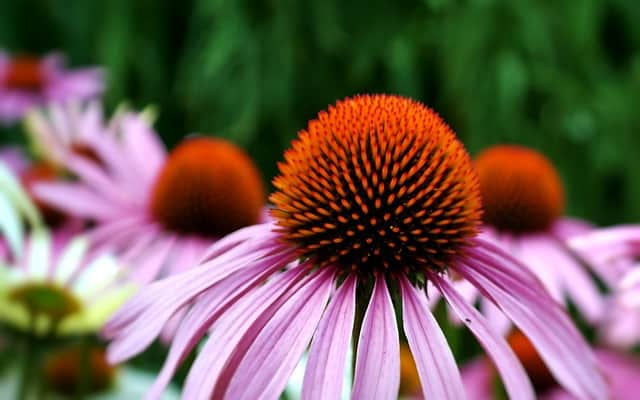
Coneflowers (Echinacea) are a fantastic choice for planting around your mailbox, offering a striking and long-lasting display. These hardy perennials come in a variety of vibrant colors, including purple, pink, white, and even yellow. Coneflowers thrive in full sun and well-drained soil, making them well-suited for the often-challenging conditions near a mailbox. Their tall, daisy-like flowers and distinctive central cones create a captivating visual impact that will draw the eye and add a touch of natural beauty to your curb appeal. Coneflowers are also known for their drought tolerance and ability to attract pollinators, further enhancing the overall appeal of your mailbox garden.
Black-Eyed Susan: The Vibrant Perennial
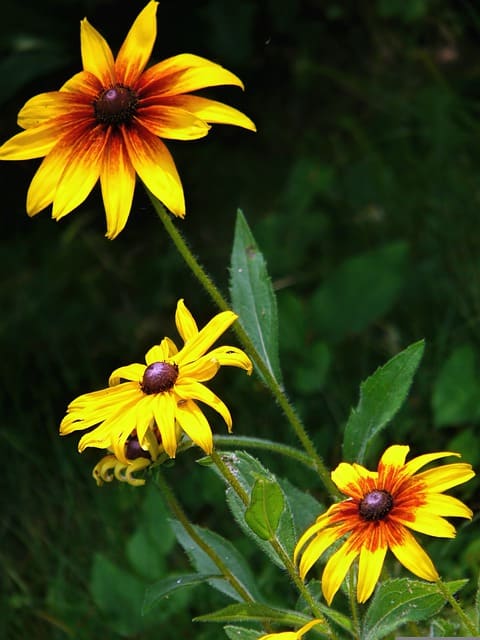
Black-Eyed Susans (Rudbeckia) are a true showstopper when it comes to planting around a mailbox. These vibrant perennials boast bold, golden-yellow petals that surround a distinctive dark center, creating a captivating visual impact. Black-Eyed Susans thrive in full sun and well-drained soil, making them an ideal choice for the often-harsh conditions surrounding a mailbox. Their tall, sturdy stems and long-blooming nature ensure a reliable and eye-catching display that will draw the attention of all who pass by. These resilient flowers are also drought-tolerant, requiring minimal maintenance to keep your mailbox garden looking its best.
Purslane: The Cascading Annual
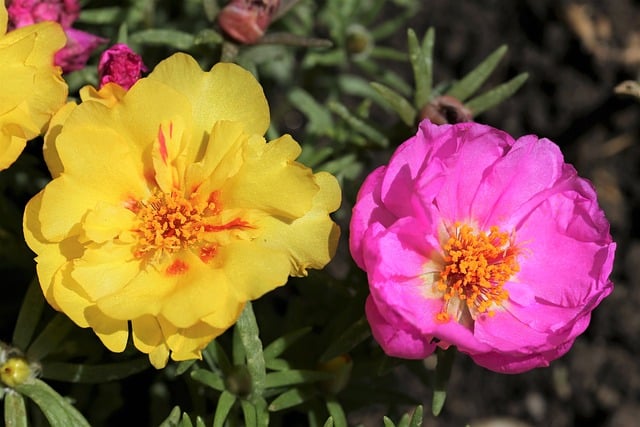
For a touch of trailing, sun-loving charm, consider planting purslane around your mailbox. These vibrant annuals come in a range of colors, including yellow, pink, and red, and feature succulent-like foliage that creates a lush, spilling effect. Purslane thrive in full sun and well-drained soil, making them a perfect match for the often-harsh conditions near a mailbox. Their cascading growth habit allows them to tumble over the edges of the planting area, creating a visually stunning and low-maintenance display. Purslane are also known for their drought tolerance, ensuring a reliable and long-lasting floral show.
Blanket Flower: The Versatile Perennial
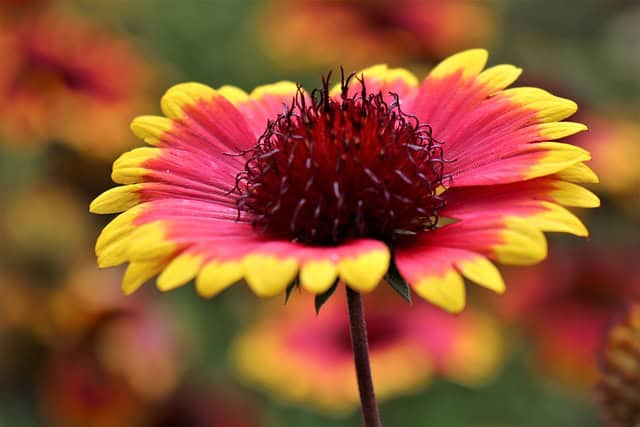
Blanket flowers (Gaillardia) are a fantastic choice for planting around your mailbox, offering a unique and eye-catching display. These hardy perennials feature vibrant, daisy-like blooms in shades of red, orange, and yellow, with distinctive centers that create a captivating contrast. Blanket flowers thrive in full sun and well-drained soil, making them well-suited for the often-challenging conditions near a mailbox. Their compact, mounded growth habit and long-blooming nature ensure a reliable and visually appealing display that will complement the overall aesthetic of your curb appeal. As an added bonus, blanket flowers are deer-resistant, making them a practical choice for areas prone to wildlife intrusion.


